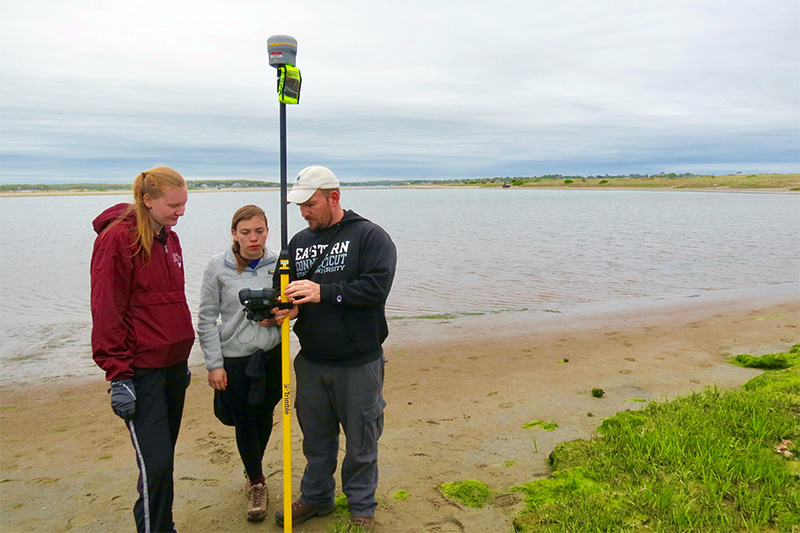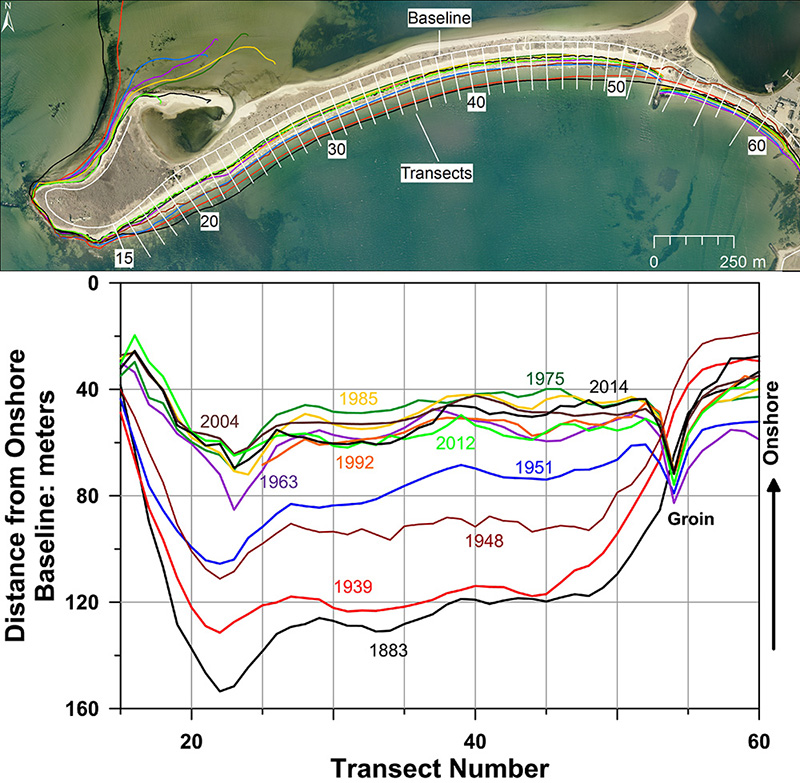- Apply
- Visit
- Request Info
- Give
New research: Storms, not sea level, drive shoreline change
Published article examines migration of Napatree Point, RI
Written by Michael Rouleau
Published on September 07, 2021

New research by coastal geologist Bryan Oakley, a professor in the Environmental Earth Science Department at Eastern Connecticut State University, reveals that storminess is a greater driver of shoreline change than sea-level rise. His findings publish at a time of increasing hurricane and tropical storm activity driven by a warming planet.
Published in the journal “Geosciences” in early September, Oakley’s research on storm-driven barrier migration is focused on Napatree Point — an isolated barrier in southern Rhode Island — but is applicable to shoreline behavior across the Northeast. Barriers — both barrier islands and barrier spits — are common coastal landforms along the Atlantic and Gulf Coasts that grow from the deposition of sand and sediment.

While increased storminess (in severity and in frequency) and sea level rise are both likely outcomes of climate change, storms cause strong waves and storm surges that “overwash” and erode sand dunes and barriers, which drive coastal change. Furthermore, as storms increase in frequency, shorelines have less time to recover between events, making them increasingly susceptible to the turbulent sea and to migration/erosion.
Barrier recovery refers to the restoration of the land mass to pre-storm conditions. Coastal geologists like Oakley use metrics such as dune height and volume to track recovery. “Recovery of the beach takes weeks, recovery of the dunes takes years,” said Oakley, explaining that sand deposition by the churning ocean recovers the beach, whereas windblown (eolian) processes restore dunes — a much slower process.
According to Oakley, the Napatree Point barrier recovered approximately five years after Hurricane Sandy, yet it took more than a decade following the devastating 1938 New England Hurricane. The slower recovery following 1938 was due to hurricanes in 1944, 1954 and several other large extra-tropical storms (i.e. the infamous Ash Wednesday storm of 1962), which kept interrupting the recovery timeline, leading to more overwash and more shoreline change/migration of the barrier.
The barrier continued to move north rapidly in the three stormy decades following 1938, yet it has remained relatively unchanged since 1975 despite rising sea levels and moderate storm events, according to Oakley, due to ample barrier recovery time.

As for the recent Tropical Storm Henri, “landfall (of major storms) doesn’t guarantee substantial coastal impacts,” said Oakley. “Henri came ashore with only a couple feet of storm surge, and the peak of the surge occurred after high tide, which limited impacts on the beaches.”
Speaking of his research, he said, “This work shows that if there are more frequent storms, or at least several substantial storms close together, the shoreline will likely respond to those events by migrating. The results here do not negate the impact of sea-level rise on barriers, however, the cumulative effects of storms between 1938 and 1975 likely far outweigh any response due to sea-level rise.”
Oakley also stresses that the response of Napatree during the period between 1938 and 1975 as illustrative of the challenges these barriers will face in the future, and the importance of storm frequency relative to the recovery of the dune systems. See Oakley’s full article at https://www.mdpi.com/2076-3263/11/8/330.


